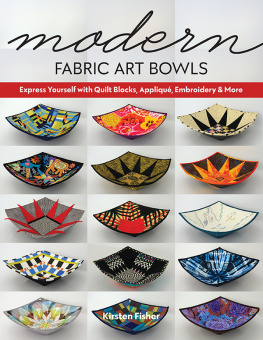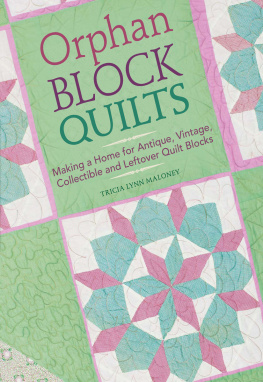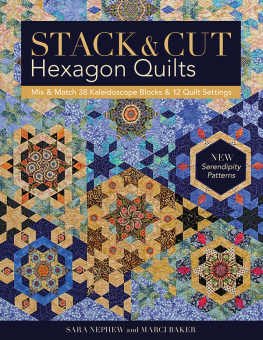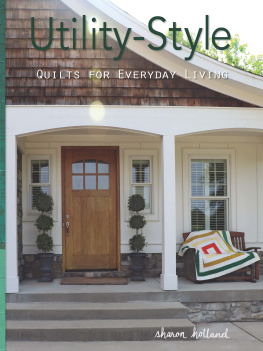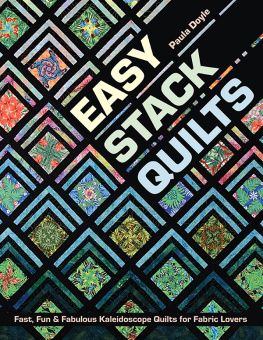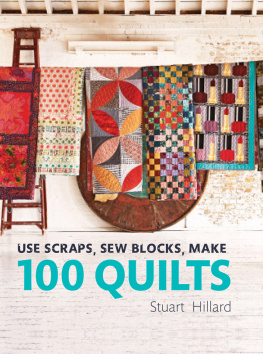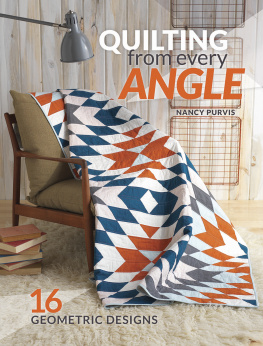
PUBLISHER: Amy Barrett-Daffin
CREATIVE DIRECTOR: Gailen Runge
ACQUISITIONS EDITOR: Roxane Cerda
MANAGING/DEVELOPMENTAL EDITOR: Liz Aneloski
COVER/BOOK DESIGNER: April Mostek
PRODUCTION COORDINATOR: Zinnia Heinzmann
PRODUCTION EDITOR: Alice Mace Nakanishi
PHOTO ASSISTANT: Gabriel Martinez
FRONT COVER PHOTOGRAPHY:
Row 1 (L to R): Anita Nowacka; SJSA; Kati Douglas (hidden)
Row 2 (L to R): William Cooper (hidden); SJSA (hidden); Amari Dixon (hidden)
Row 3 (L to R): SJSA; SJSA; Kati Douglas; Teresa Duryea Wong
Row 4 (L to R): Kati Douglas; Carter Gaskin
PHOTOGRAPHY by Social Justice Sewing Academy, unless otherwise noted above or in Additional Photography Credits
Published by C&T Publishing, Inc., P.O. Box 1456, Lafayette, CA 94549
Acknowledgments
The Social Justice Sewing Academy is a grassroots organization. The very nature of grass roots means there are blades of grass spread in so many communities and in so many diverse populations that it would be impossible to acknowledge every name of every person who contributed to SJSA here on this page. We are incredibly grateful to thousands of volunteers, donors, students, workshop participants, facilitators, families, and sponsors, as well as all the makers who have stepped up to help us raise voices, remember the victims, and honor their lives. Your time, talent, and support are sincerely appreciated and treasured. We also appreciate those of you who have taken the time to read this book. It takes a village. The SJSA community is a powerful band of advocates and artivists. We thank you for your contributions.
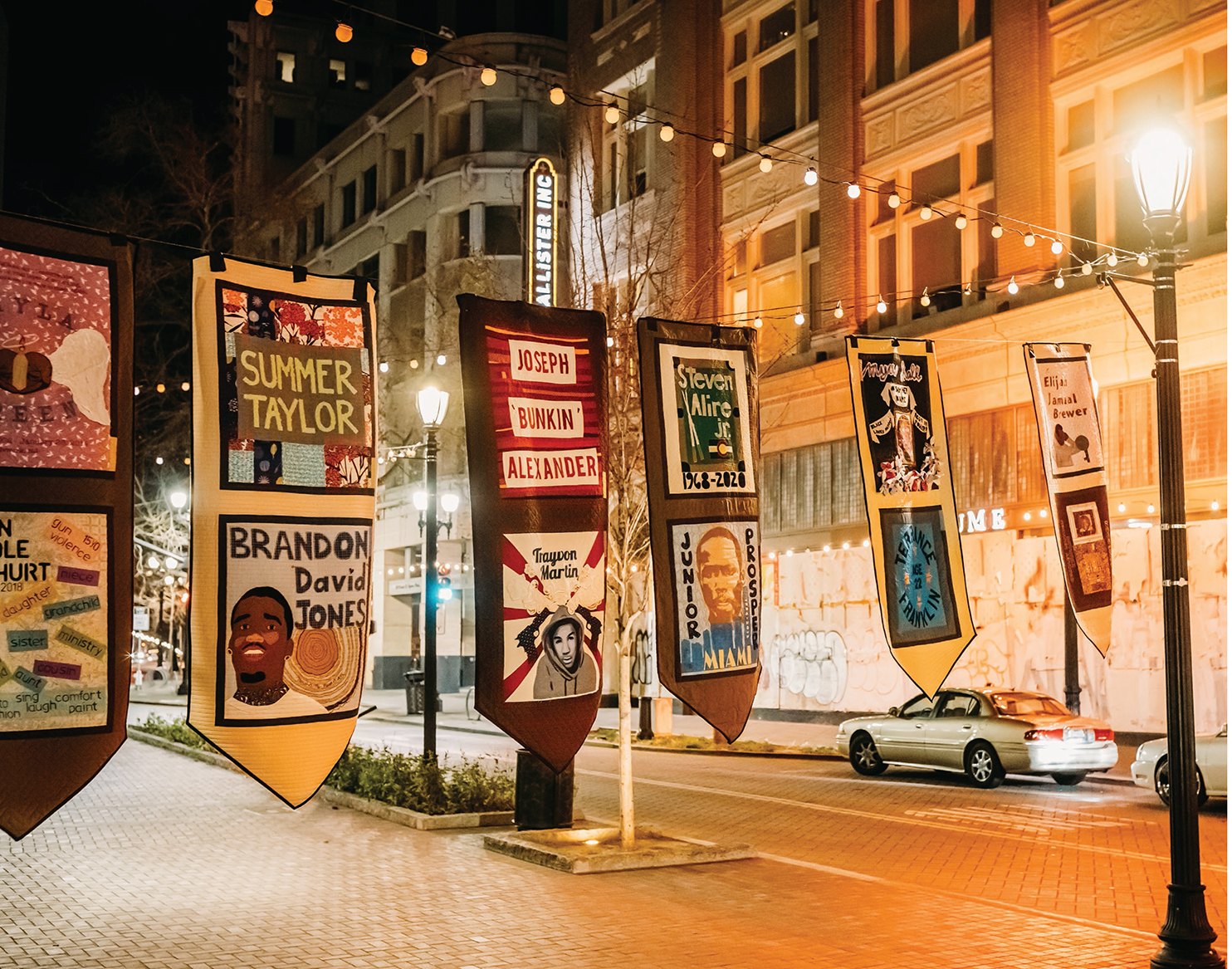
When you take a step back and look at the sheer size of the SJSA Remembrance Project exhibit, you will quickly realize the tragic fact that the list of victims far exceeds the capacity of a memorial project like this one.
FOREWORD

by Reverend Jesse L. Jackson, Sr.
Merriam-Websters dictionary tells us a metaphor is a figure of speech in which a word or phrase literally denotes one kind of object or idea as it is used in place of another to suggest a likeness or analogy between them.
In 1984, for my speech as a presidential candidate to the Democratic National Convention (DNC) in San Francisco, I was searching for a metaphor to modify and build on the idea that America is a melting pot. A melting pot suggests that while there are many different ingredients that go into a pot, they are mixed together in such a way as to transform them into just one or all the same.
In one sense the melting pot metaphor is correct for America. While we are different and come from many different places, that which binds us together as one is the Constitution. We also share a few ideas as wellfor example, that each individual is important and a belief in equal opportunity for all.
In San Francisco I used two metaphors as I said, Our flag is red, white, and blue, but our nation is a rainbowred, yellow, brown, black, and whiteand were all precious in Gods sight. America is not like a blanketone piece of unbroken cloth, the same color, the same texture, and the same size. America is more like a quilt: many patches, many pieces, many colors, and many sizes, all woven and held together by a common thread. The White, the Hispanic, the Black, the Arab, the Jew, the woman, the Native American, the small farmer, the businessperson, the environmentalist, the peace activist, the young, the old, the lesbian, the gay, and the disabled make up the American quilt. Even in our fractured state, all of us count and fit somewhere. The idea of a quilt is more representative of what America is than a melting pot.
Stitching Stolen Lives tells us of a worthy and working project. It reminds us of the unnecessary loss of life, especially young lives. It changes the lives of the workers and the beneficiaries of their work. It reminds us to love our neighbor as we love ourselves, and of the consequences of hate. It reminds us of the joy of weddings and the tragedy of unnecessary funerals. It keeps hope alive through remembrance of those we loved and of those whose lives have been stolen.
Stitching Stolen Lives takes the idea of the quilt to a different and even deeper psychological and spiritual level. It embraces the use of a real quilt for weddings, funerals, and remembrance of our loved ones. It reminds us of the importance of seeing and touching. It allows the quilt to bring back memories, exceed our feelings, and connect our souls. It amplifies voices past, empowers the quilters, builds empathy, educates, and activates for justice. It reminds and tells us theres power, healing, and remembrance power, in a quilt.


by Hillary Rodham Clinton
Memories can bring comfort and courage. They can also bring grief and fury. How a person balances these competing emotions defines his or her characterand how a community responds to lives snatched by violence determines its future.
Stitching Stolen Lives calls us to feel so much: sadness, anger, love, determination. At the same time, it challenges us to reach for empathy and to forge the relationships that are crucial to strong, safe communities.
Each stitch in each quilt, in each of these banners, is a bold, brave stride toward that safer, more just world. Each piece reflects a life that was lost and the love that remains. Each piece is also an invitation to speak out, organize, lobby, and use all our skills to make our neighborhoods and our nation places filled with joy and possibility rather than fear.
These artists know this, and their art compels us to act.
The Social Justice Sewing Academy gives volunteers the space to do the essential work of creating and building community. These artists, volunteers, and students give voice to their memories while working together to raise their voicesone stitch at a timeto create resistance, hope, and of course, art.
I am grateful for their talent and their couragefor the healing they bring and the history they preserve. Because the Social Justice Sewing Academy quilters are historians as much as they are artists. They painstakingly record voices, transferring each syllable onto fabric. They show us the past in unflinching candor and help us see what must be done to heal.
Quilting has always been a powerful tool. In our nations earliest days, women of all racesnone of whom could voteturned to quilting to preserve the past and illustrate their dreams for the future. Now, as people of all races all over our country work to combat gun violence, bigotry, and a pandemic, the Social Justice Sewing Academy teaches us once again the beauty and power of this artand spotlights the essential role of young voices in building the world we need. That is just one reason why I am so proud that they agreed to create a quilt for the Clinton Presidential Center.
We need these voices. We need this art, full of strength and promise. And just as importantly, we need to heed the call to action woven into every stitch.
Next page

